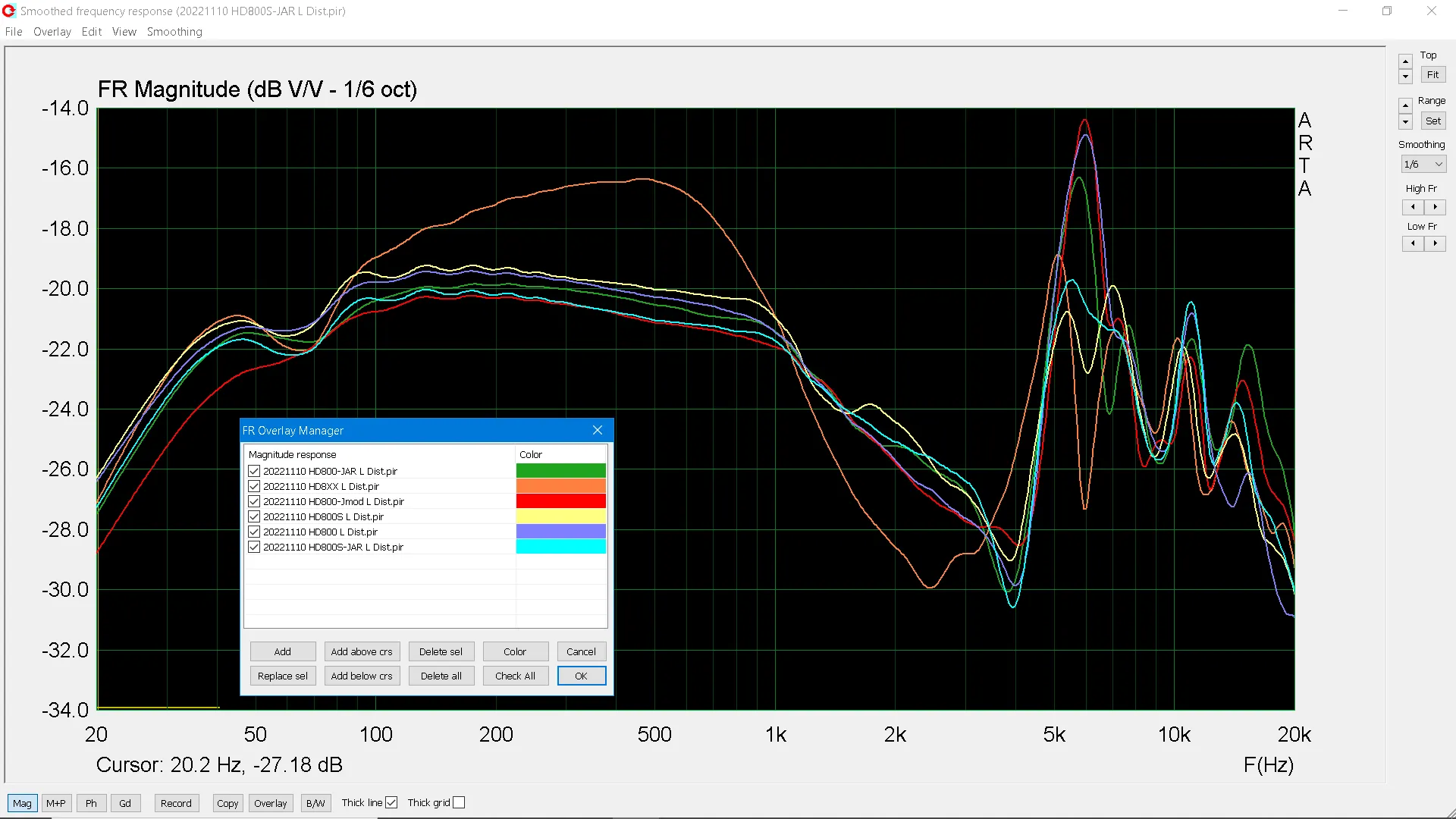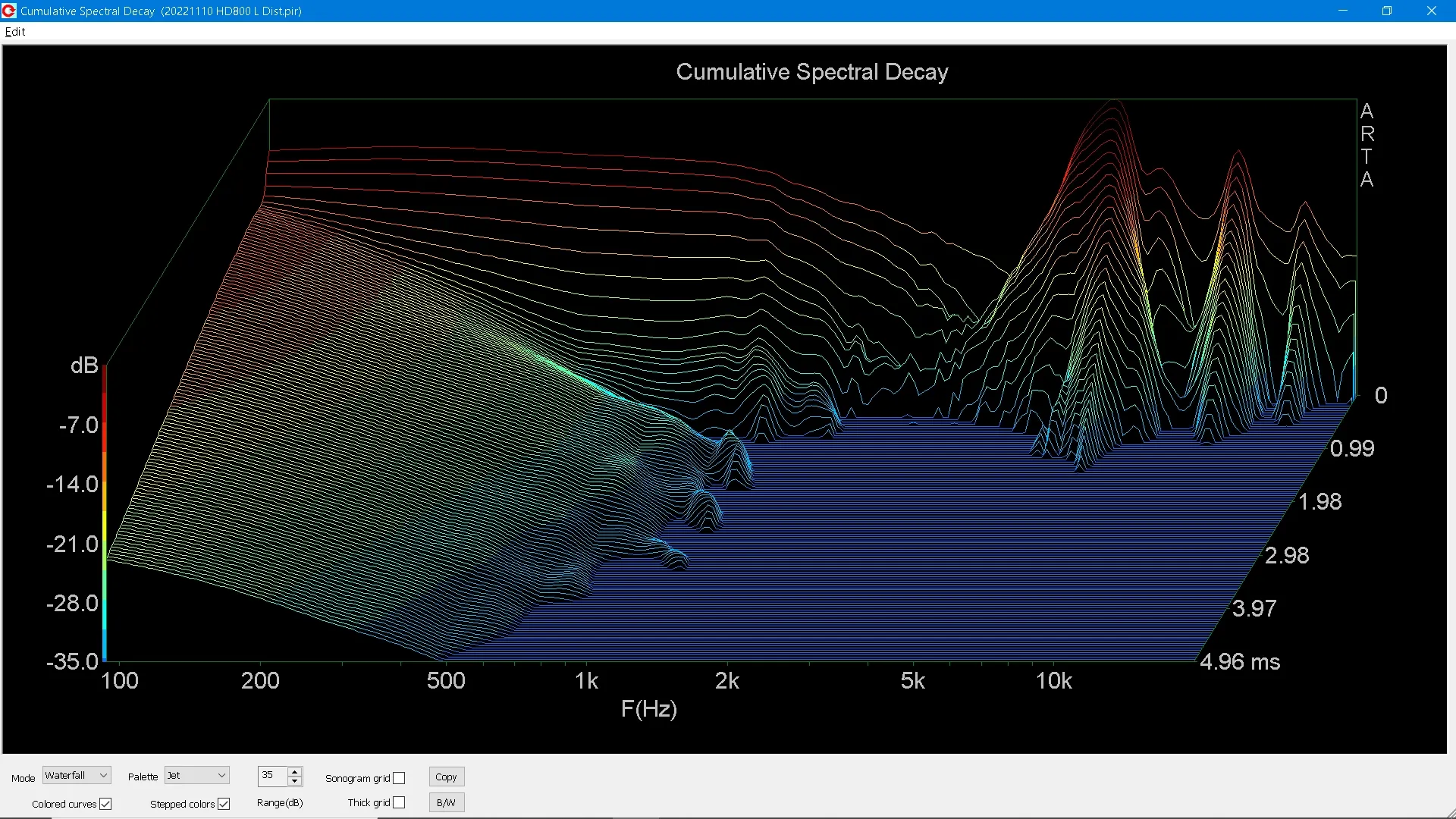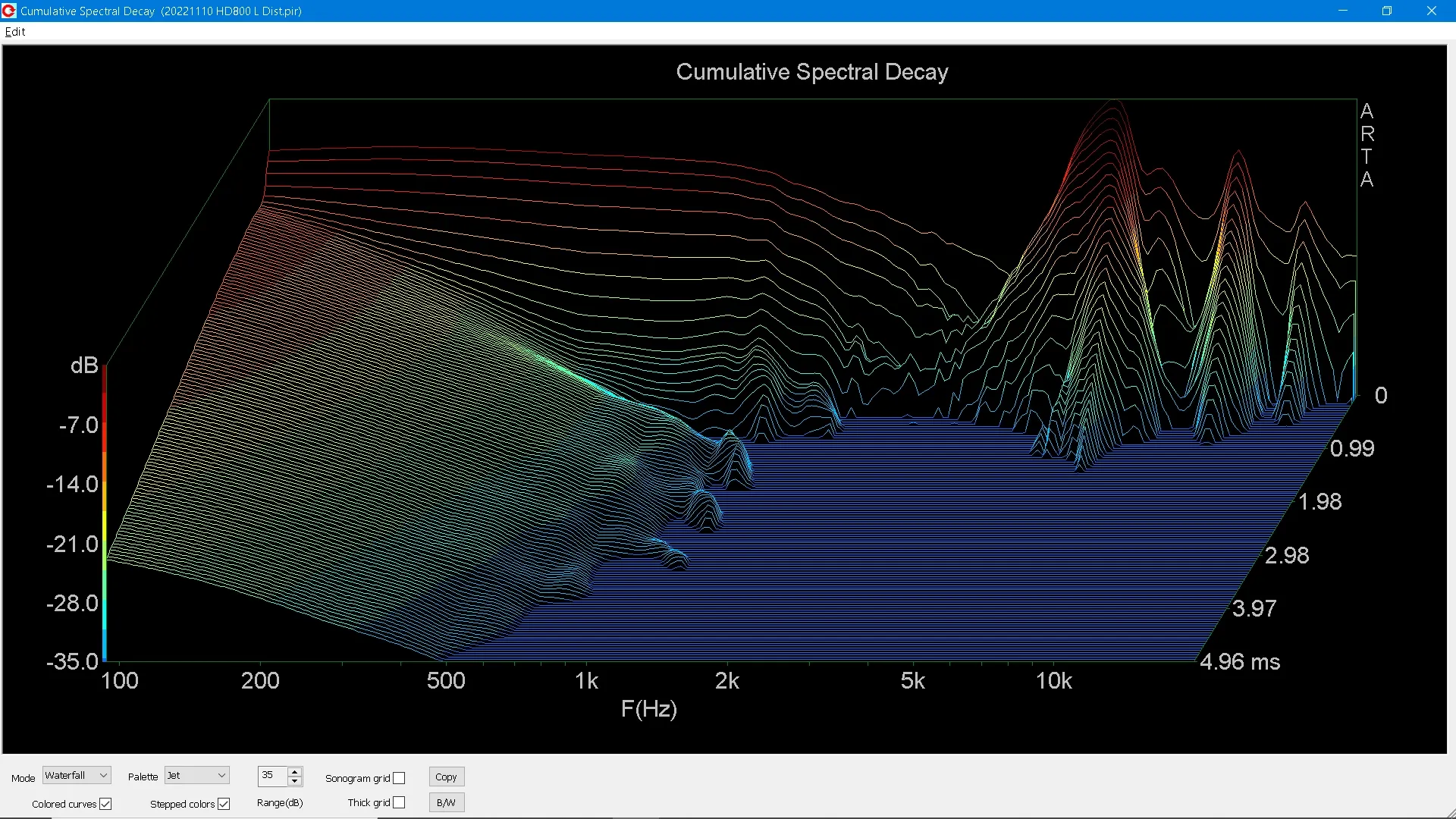Full details and more measurements at above link.
My comments:
1.
Overall Frequency Response (FR) graphs
2.
Stock HD800 vs HD8XX Cumulative Spectral Decay (CSD) graph (which one is which you can tell from the window title)
3.
Stock HD800 vs JAR800 CSD
Figures are presented first because it’s helpful to look at both FR+CSD to make judgements.
HD800S is a little hotter than stock at 5kHz, it trades 7kHz for 5kHz. And it is lower from 40Hz to 1kHz.
On the CSD for HD8XX vs HD800, look at the sustained ringing between 100Hz to 4KHz at 0.99ms- that creates a muddy thump. Bass and Kick are smeared and male vocals become a bit wooly. On the overall FR overlay, the HD8XX can be seen to diverge from all the others, mostly in the same 100Hz to 4kHz region.
On the CSD for JAR800, decay is more even and linear above 5KHz, and is more well behaved. In particular, it shows I broke up the 8kHz, which is great. Spreading means no ringing (i.e. sustained resonant frequency of the system that creates sibilance). The two peaks at 6kHz + 8kHz are the reason for the painful sibilance on stock HD800.
However, the 6kHz still is a little ringing. Why? I intentionally kept the 6kHz to keep all the strengths of the HD800, even though it means I do keep the brightness. 6kHz really helps in the perception of extended highs. Without 6kHz, HD800 will lose what makes it so special.
So, of course it's going to be brighter than the HD650 or something. But you shouldn't expect it to be a HD600 either. The HD800 is what it is and I don't seek to change what it's great at, just to tone down the painful sibilance. I wasn't aiming to turn the HD800 into HD600/HD650.
But it definitely doesn’t mean I am okay with the sibilance - the sibilance was precisely the reason why I set out to create the JAR800. Because I love the HD800 for what it is, I didn’t stop developing the JAR800 until it retained the air of the HD800 while not being sibilant. Looking at the FR it's apparent I was able to surgically target the 6kHz peak without affecting other frequencies much, and even manage to add a little more bass while I'm at it. This correlates with my listening experience, although that the FR measurements don’t tell how I’ve improved the soundstage or resolving power.
People looking for a more drastic change (and more bass) should look into my JAR800S, which will be a little more V-shaped FR. Bass quantity is at the expense of slightly more higher-order bass distortion over time (not as clean). This is due to the fundamental unit differences between the HD800 and HD800S - a commonly made observation is that there is more higher-order harmonic distortion in the HD800S. Because of this, I had a slightly different design goal with the JAR800S. However, the upper-mid peaks will still get smoothed out nicely. No matter what HD800S base you’re using, I design each JAR800S pair to be lively, spacious with good air.
Regardless of which variant of HD800/HD800S serial number though, they can all benefit from cleaning up the 6kHz+8kHz peak, so there’s no need to get too hung up on serial numbers. More details about this elsewhere on the site.



